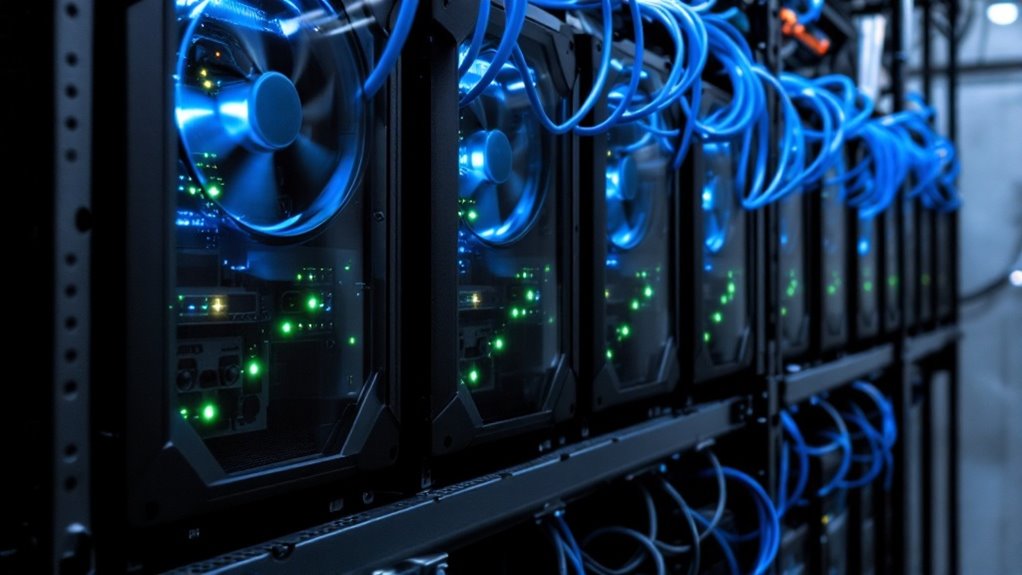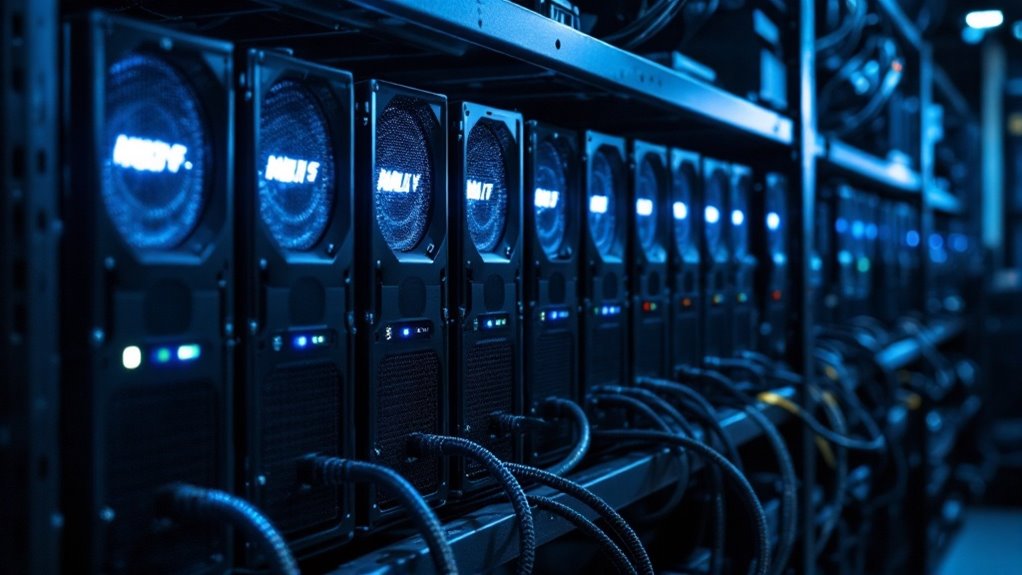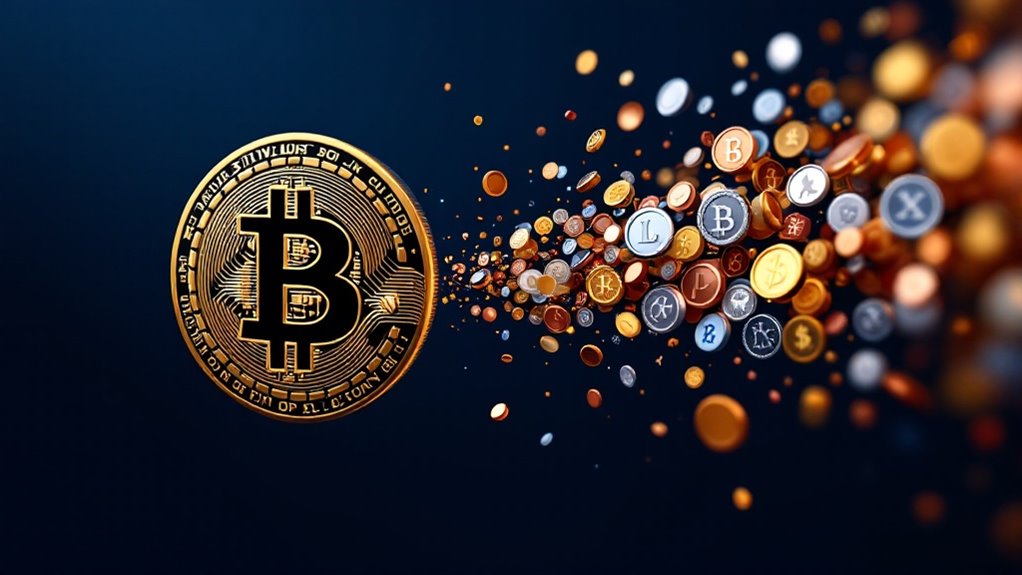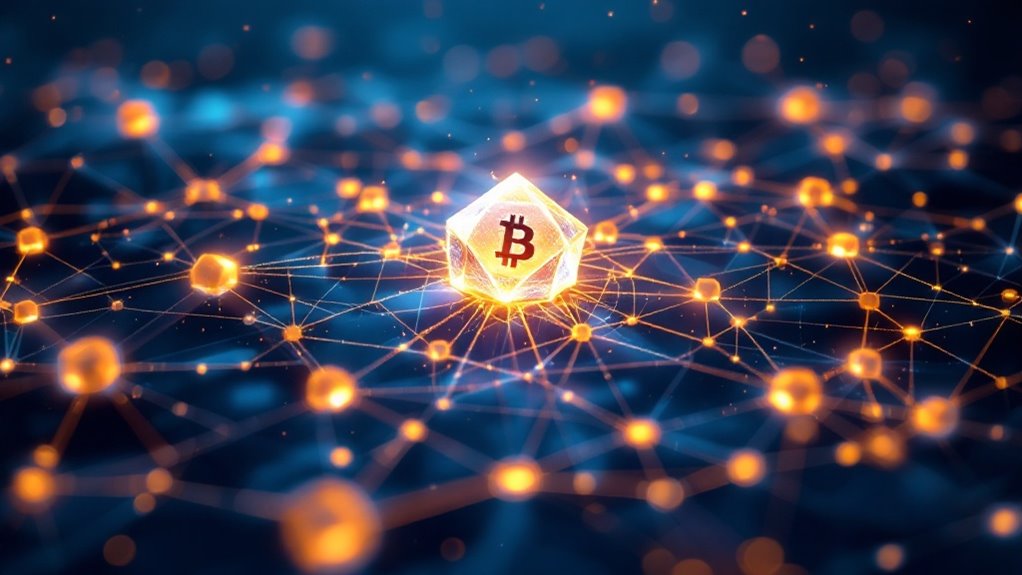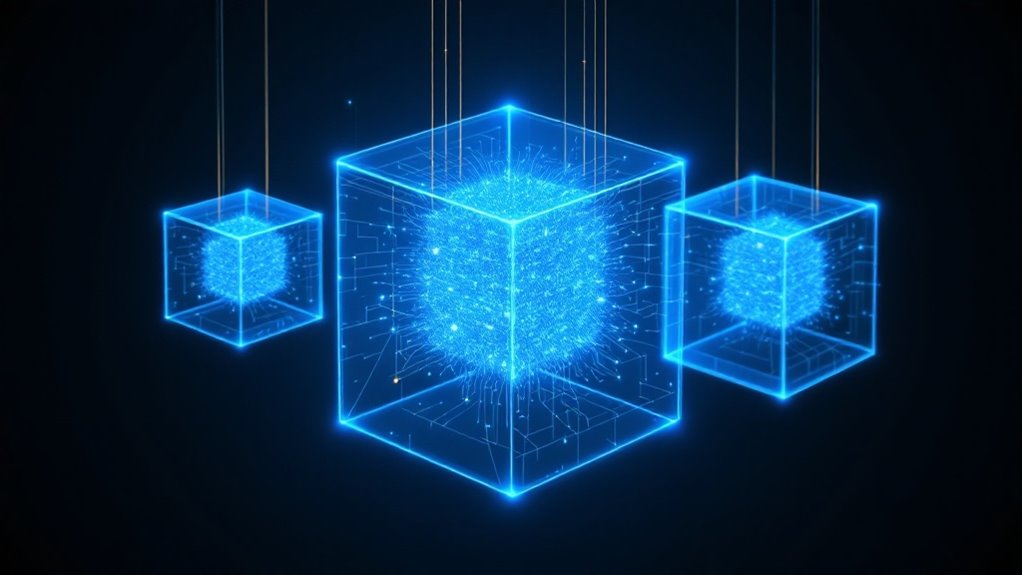Bitcoin mining combines technical savvy with financial opportunity, allowing newcomers to earn cryptocurrency while supporting network security. Modern miners need specialized ASIC computers, which can cost upwards of $15,000, along with access to affordable electricity. Most beginners join mining pools to share computing power and rewards, similar to a digital cooperative. While the initial investment is substantial, strategic timing and efficient hardware can lead to profitable returns. The journey from basic understanding to mining mastery reveals layers of cryptocurrency's innovative potential.
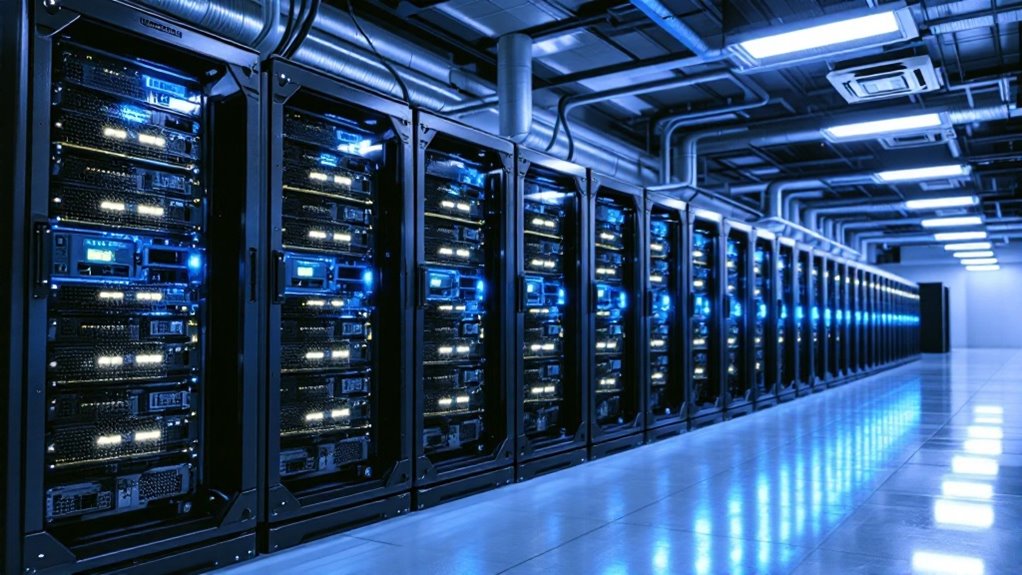
While the allure of digital gold has captivated investors worldwide, Bitcoin mining remains a complex yet fascinating gateway into the cryptocurrency ecosystem. Like modern-day prospectors wielding silicon picks instead of metal ones, miners use specialized computers called ASICs to solve intricate mathematical puzzles that validate transactions and maintain the blockchain's integrity. Transaction processing fees incentivize miners to continue their critical network support.
Gone are the days when enthusiasts could mine Bitcoin from their gaming computers. Today's mining landscape demands industrial-grade equipment, with powerhouse machines like the Bitmain Antminer S19 Pro+ humming away in carefully cooled rooms, their fans whirring like miniature jet engines. These mechanical workhorses don't come cheap – a single unit can cost upwards of $15,000, enough to make any aspiring miner's wallet wince. The security of the network depends on this hardware collectively participating in the proof of work consensus mechanism.
The digital mining camp has evolved into a sophisticated operation where solo prospectors often band together in mining pools, sharing their computational muscle to increase their chances of striking cryptocurrency gold. Think of it as a modern-day mining cooperative, where rewards are distributed based on each member's contributed hash power. Giants like Foundry USA and Antpool now dominate the landscape, controlling the majority of the network's total mining power. Double-spending prevention remains a crucial benefit of this decentralized mining system.
Mining pools unite individual miners into powerful collectives, pooling resources to compete against industry giants in the digital gold rush.
Behind every successful mining operation lies the essential element of power – and plenty of it. The global Bitcoin network's appetite for electricity would make Thomas Edison's head spin, consuming enough power to run small nations. This voracious energy consumption has sparked heated debates about environmental impact, pushing miners to seek out renewable energy sources and locations with affordable electricity rates.
The economics of mining resembles a digital gold rush with a mathematical twist. Every two weeks, the network automatically adjusts its difficulty, keeping miners on their toes as they chase the current block reward of 3.125 BTC.
Success requires a delicate balance of efficient hardware, affordable electricity, and strategic timing. For newcomers stepping into this digital frontier, the path to profitability demands careful research, substantial investment, and a healthy dose of patience. The reward might be worth the effort, but only for those who understand that modern mining is more marathon than sprint.
Frequently Asked Questions
Can I Mine Bitcoin on My Smartphone?
While technically possible through mining apps, smartphone mining is impractical due to low processing power, high battery consumption, and minimal profits. Specialized ASIC hardware remains necessary for viable Bitcoin mining operations.
How Much Electricity Does Bitcoin Mining Consume per Month?
Bitcoin mining consumes approximately 13.3 TWh of electricity monthly (160 TWh annually). For individual miners, the average consumption is around 44,444 kWh per month to successfully mine one Bitcoin.
Which Countries Have Banned Bitcoin Mining?
Several countries have completely banned bitcoin mining, including China, Algeria, Bangladesh, Egypt, and Nepal. Others like Kosovo, Iran, Bolivia, Morocco, and Vietnam have implemented partial restrictions or temporary bans due to various concerns.
Are Bitcoin Mining Pools Better Than Mining Alone?
Mining pools generally offer more consistent returns and lower risk compared to solo mining, despite charging fees. They provide steady income for smaller miners while solo mining requires substantial investment for meaningful rewards.
What Happens to Bitcoin Mining After All Coins Are Mined?
After all bitcoins are mined, miners will rely solely on transaction fees for revenue rather than block rewards. The network's security will depend on fee markets and transaction volume to incentivize continued mining operations.
